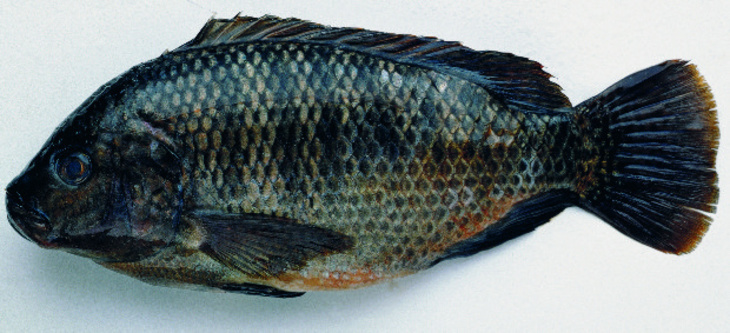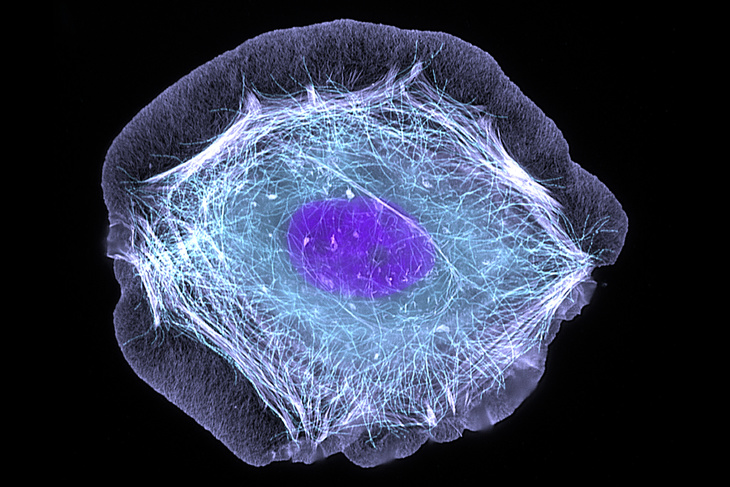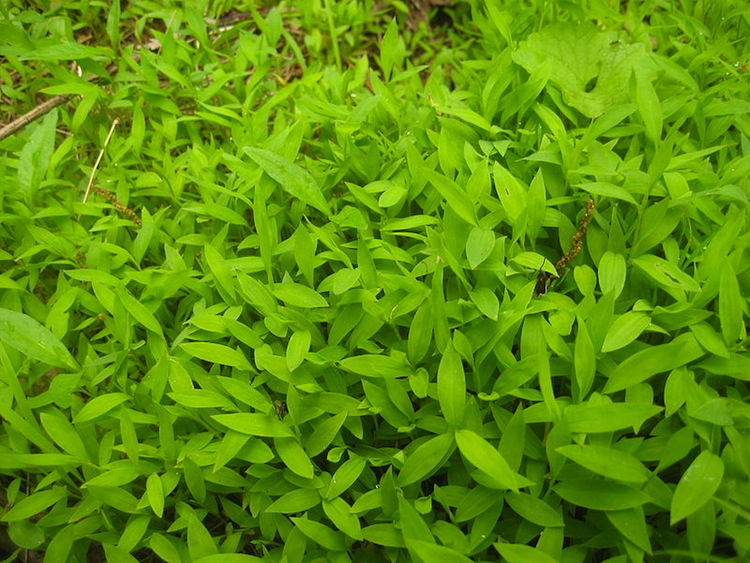-
May 27, 2015
Fish Skin Band-Aids: a natural way to speed wou... -
March 19, 2014
Do “Smart Pills” Really Make You Sm... -
February 24, 2014
The Invasive Species Wriggling Beneath Your Feet -
December 09, 2013
Getting the Straight Dope on Weed -
October 07, 2013
The Delta Fingerprint: Anthropogenic Climate Ch... -
September 30, 2013
Keep It Simple Students: Mapping the Biological... -
September 25, 2013
Keep It Simple Students: How You Were Copied -
September 19, 2013
Keep It Simple Students: Camouflage -
September 04, 2013
Nietzsche's Butterfly: An Introduction to Chaos... -
August 23, 2013
Obituary: Kepler Spacecraft “Planet Hunte... -
July 26, 2013
The Poets of Starlight -
July 10, 2013
Socks, the Doctor and the End of the Universe -
June 18, 2013
Poo Transplants: Sniffing Out the Story -
May 23, 2013
We’re Launching Ten New Blogs and One New... -
May 16, 2013
Misophonia: Enraged by Everyday Sounds -
May 14, 2013
Male Black Widows Sniff Out Femme Fatales -
May 13, 2013
The Science of Earth and the Human Policies tha... -
May 08, 2013
Dream Catcher: The Neuroscience Behind Decoding... -
February 04, 2013
If Your Head Is In the Clouds At Least It Won't... -
October 11, 2012
The Foundation of Cosmetics -
October 05, 2012
#30DayGreen Day 19: Synthetic Meat -
September 28, 2012
#30DayGreen Day 12: Hard Times -
September 24, 2012
#30DayGreen Day 8: Green Bathroom -
September 23, 2012
#30DayGreen Day 5: Recycling Right -
September 20, 2012
#30DayGreen Day 3: Carnivores -
September 20, 2012
The Designer's Detritus: ENCODE, Junk DNA, and ... -
September 19, 2012
#30DayGreen Day 2. Talking Rubbish: The Indian ... -
September 17, 2012
30 Days of Green: Day 1 -
September 10, 2012
#30DayGreen: A Scitable Recycling Challenge -
August 30, 2012
How We Represent Risk Isn't Helping Medical Scr... -
August 21, 2012
An Ecology of Houses -
August 10, 2012
Occupy ALOHA 2012: A tribute to Bob Dylan -
August 01, 2012
Once upon a time: The possible story of viruses -
July 26, 2012
Skepticism And The Second Enlightenment -
July 19, 2012
Of (misplaced) Pride and (everlasting) Prejudice -
July 13, 2012
How About That Cup Of Coffee? -
July 10, 2012
The Great “Detox” Deception -
July 08, 2012
Painless Injections -
June 29, 2012
Why walk when you can jump? -
June 21, 2012
To be or not to be good science -
June 12, 2012
Cell Phones and Health Hazards: Mythbusting in ... -
June 04, 2012
What Statistics Can Teach Us About History (and... -
June 01, 2012
I'm not a speciesist, but... -
May 07, 2012
How Whales Fly? -
April 28, 2012
A Case for Oral Contraceptives -
March 17, 2012
Managing views and expectations in science -
March 05, 2012
A Peek on “Lenses on Biology” -
February 23, 2012
The messenger goddess of exercise -
February 01, 2012
Preparing for the pandemic -
December 16, 2011
Veggie Tales and the Environment -
November 28, 2011
Do Our Brains Determine Our Facebook Friend Count? -
November 28, 2011
Flying Frogs -
November 09, 2011
A Closer Look at Quantum Levitation -
October 26, 2011
Shortcuts for supercentenarians -
October 05, 2011
Reconstructing the Mind's Eye -
October 03, 2011
Peptic Ulcers and a Nobel Prize -
September 15, 2011
Genetic Algorithms: Harnessing Natural Selection -
September 10, 2011
Spore Ballistics -
September 04, 2011
Chasing Earthquakes -
September 02, 2011
Earthquakes and Social Media -
August 23, 2011
Artificial Photosynthesis: Adapting Nature̵... -
August 21, 2011
Butterflies Prevent Forgery? -
August 09, 2011
Fluid Dynamics from Felis catus -
August 08, 2011
Keeping Cool with Biomimicry -
August 04, 2011
The Age of Mind-Controlled Computers -
August 04, 2011
In athletics, a technological arms race -
July 12, 2011
Getting in Shape to Go into Space -
July 08, 2011
Of Biomimicry and Learning From Ants -
July 07, 2011
Of Love Handles and Losing Weight -
June 27, 2011
Guest Post: Synthetic Biology Gets More Digital -
June 24, 2011
Inspirational Research Has Re-opened My Eyes -
June 17, 2011
Smelly Hangups for Mosquitoes... and Bedbugs? -
June 10, 2011
To Use or Not to Use: Cellphones and Health -
June 09, 2011
Nutrition Guidelines: From Pyramid to ‘Pi... -
June 02, 2011
Gas Hub Threatens Dinosaur Footprints -
May 26, 2011
An X-Ray of the Sky -
May 16, 2011
What Google's Chromebook Means To Education -
April 26, 2011
Richard Branson: Noble Conservationist or Meddl... -
April 21, 2011
New Particle Could Signal End of Standard Model -
April 12, 2011
Melbourne Says No to Medical Research Funding Cuts -
March 31, 2011
Some Like It Very, Very Hot -
March 29, 2011
Big Crayfish Could Be Key to Population Stability -
March 24, 2011
Left-Hand Man -
March 22, 2011
The Unchanging Face of Drug Discovery -
March 17, 2011
The Rise and Fall of Helium -
March 16, 2011
The Sound of Epigenetics -
March 15, 2011
The False Dichotomy Of the Nature-Nurture Debate -
March 10, 2011
The Tangle of the Nature-Nurture Debate -
March 08, 2011
Rave Culture: Correlation Doesn't Equal Causation -
March 03, 2011
The End of the Shuttle Era -
March 01, 2011
The Cocaine Vaccine -
February 15, 2011
Engineering Solar Bacteria -
February 10, 2011
The Importance of Translation -
February 08, 2011
Guest Post: The World Through Wired Eyes -
February 03, 2011
Earth Calling Space -
January 28, 2011
Pandas Need More Than Just Shoots and Leaves -
January 25, 2011
Blaming Ourselves -
January 20, 2011
Still Don't Drink the Water? -
January 18, 2011
The Forgotten Fathers -
January 11, 2011
Not Mentally Crazy -
January 04, 2011
Storytime -
December 28, 2010
Artificial Human Ovary -
December 21, 2010
The Debate Around IVF -
December 17, 2010
Guest Post: Engineering the Science of Today -
December 14, 2010
Such Great Heights -
December 07, 2010
Pregnant While Already Pregnant -
December 03, 2010
Barcoding Guts -
November 30, 2010
Genomic Sequencing and Information Bottleneck -
November 25, 2010
An Interview with Melinda Wenner Moyer -
November 22, 2010
Guest Post: A Year in Neuroscience -
November 18, 2010
Lessons from the Dam -
November 16, 2010
An Interview with Ferris Jabr -
November 11, 2010
The Architecture of Choice -
November 09, 2010
Guest Post: Learning from the Luminaries -
November 04, 2010
Cracking the Turing Test -
November 02, 2010
Can miRNA Cure Cocaine Addiction? -
October 28, 2010
If You're Reading This, You're Probably Weird -
October 26, 2010
Lindau Meetings: Hamilton Smith on Miniature Ro... -
October 26, 2010
Lindau Meetings: Francoise Barre-Sinoussi on th... -
October 20, 2010
World Statistics Day -
October 15, 2010
The Golgi Apparatus -
October 12, 2010
Lindau Meetings: Jack Szostak on the Origin of ... -
October 07, 2010
Mighty Mitochondria -
October 04, 2010
Lindau Meetings: Tim Hunt on Systems Biology -
October 01, 2010
A Long Wait in the Que -
September 27, 2010
My ER Play -
September 21, 2010
Cell Bio at Scitable is Coming! -
September 10, 2010
Stem Cells, Please? -
August 30, 2010
An Eye for an Eye? -
August 24, 2010
Under the Scalpel -
August 18, 2010
Color and Depression in the Eye of the Beholder -
August 10, 2010
Guest Post: If You Build It, They Will Come -
August 06, 2010
Guest Post: Assessing the Risks of Personal Gen... -
August 05, 2010
Guest Post: The Limits of Science in Medicine a... -
August 04, 2010
Guest Post: Introduction to Terry -
July 30, 2010
A Whiff of Bee Evolution -
July 27, 2010
Naturally Obsessed: The Making of a Scientist -
July 15, 2010
When We Share Ideas, We All Get More -
July 13, 2010
Bee Happy? -
July 02, 2010
Of Exams and World Cup -
June 23, 2010
Summer Science Fiction -
June 14, 2010
The Colorful Life of the Rainbow Eucalyptus -
June 07, 2010
Oil and Water -
June 04, 2010
A Science Student's Typical Day: Colombian Edition -
May 24, 2010
The Art of the Sloth -
May 21, 2010
Synthetic Life and Other News -
May 17, 2010
Guest Post: Scary Diseases Part 3 -
May 07, 2010
Guest Post: Matt Schiller of the AMSJ -
April 29, 2010
Get Contaminated -
April 22, 2010
Learning without Brains? -
April 15, 2010
Goes Down the Drain -
April 08, 2010
Don't Drink The Water? -
April 06, 2010
Deciphering Water -
March 31, 2010
The Water Series -
March 29, 2010
Predicting Upsets -
March 25, 2010
Miraculous Miraculin -
March 16, 2010
3.14159 . . . Day -
March 12, 2010
Working "5 to 9" -
March 05, 2010
The Mathematics and Neurology of Wonderland -
February 26, 2010
Whitney's Favorite Links -
February 23, 2010
Khalil's Favorite Links -
February 19, 2010
Justine's Favorite Links -
February 16, 2010
Tara's Favorite Links -
February 12, 2010
Film and Flora -
February 08, 2010
Are We Friends with Them? -
February 01, 2010
Of Gorgeous Sceneries and Giant Lizards -
January 25, 2010
R2D2 Go; 3D2 Stay? -
January 20, 2010
Avatar: Power in Surrender -
January 20, 2010
Avatar in Review -
January 11, 2010
Prize Fight -
January 08, 2010
Copenhagen: Far from the End -
January 07, 2010
Getting It Write -
December 30, 2009
What Would Jesus Do? -
December 21, 2009
Finals: The Real Grinch -
December 14, 2009
Let It Snow -
December 07, 2009
The Mouse Is Mightier, or Is It? -
November 30, 2009
Chemistry Magic -
November 24, 2009
Stupak, or a Step Back? -
November 04, 2009
Creative science photography -
October 29, 2009
Pre-med Don't Ask, Dont Tell -
October 27, 2009
Memorizing techniques from around the world -
October 22, 2009
How to Make a Scitable Classroom -
October 15, 2009
An Interview with Nobel Prize Winner Dr. Carol ... -
October 14, 2009
Songs for a New Age -
October 13, 2009
An Interview with Jorge Cham -
October 06, 2009
Three's Company: A Trio of Americans Wins the N... -
September 30, 2009
Scary diseases Part 2: Fatal Familial Insomnia ... -
September 23, 2009
A New Perspective on Vision -
September 22, 2009
“I See,” Said the Color Blind Man -
August 25, 2009
A typical day of a Science Student in Malaysia -
August 20, 2009
The Write Choice -
August 19, 2009
Scary Diseases Part I: PAM -
August 18, 2009
Chasing the Red Queen in Academia -
August 11, 2009
Debunking Biofuels (or not): Part 3 -
August 04, 2009
Debunking Biofuels: Part 2 -
July 31, 2009
Patience with Patients -
July 29, 2009
iEureka -
July 23, 2009
Debunking Biofuels: Part I -
July 22, 2009
Brain Games: Part II -
July 15, 2009
Genetics Fail -
July 14, 2009
Undoing pollution with plants -
July 13, 2009
Sofasaurus Rex: King of the Prehistoric Jungle -
July 09, 2009
Pass me that cheeseburger -- and a shake! -
July 07, 2009
Brain Games: Part I -
July 06, 2009
The toxic underbelly of green lightbulbs -
June 29, 2009
To Drink or Not to Drink? First, Ask the Right ... -
June 26, 2009
A Squid Named Ishmael -
June 25, 2009
Nanoparticle Concerns Getting Under Your Skin? -
June 25, 2009
E pluribus unum: out of many, one -
June 11, 2009
A twisted tango: the falsification of research ... -
May 28, 2009
Of mice and men: recent developments in the fie... -
May 26, 2009
Nonprofit harnesses business strategy to cure d... -
May 26, 2009
One reason for decreased cancer incidence among... -
May 21, 2009
Sticky situation reveals part of our evolutiona... -
May 21, 2009
Fractions of a second can ruin a well-developed... -
May 18, 2009
Blood cells in the right place at the right time -
May 15, 2009
America, where the streets are paved with therm... -
May 14, 2009
We got the beat! (and so do they.) -
May 13, 2009
Milk: it does some bodies good -
May 12, 2009
When marketing campaigns direct scientific rese... -
May 08, 2009
Don’t count your chickens before they hat... -
May 06, 2009
In search of a one-track mind -
May 01, 2009
Botox for the brain -
April 28, 2009
Some flu facts in the midst of a media frenzy -
April 08, 2009
Are sharp teeth necessary to survive the rat race? -
April 07, 2009
Fighter or forager? It depends on a brain gene. -
April 06, 2009
Ants change the rules of an evolutionary arms race -
April 02, 2009
Gender ratios around the globe -
April 01, 2009
Pheromones: the key ingredient missing from on-... -
March 31, 2009
The physiology of scaling Mt. Everest -
March 30, 2009
Three's company: symbiosis, drug discovery, and... -
March 27, 2009
Attack of the supermodel tomatoes -
March 26, 2009
The genetics of achondroplasia -
March 25, 2009
X-chromosome inactivation in the calico cat -
March 24, 2009
Freedom, liberty and fraternity -
March 23, 2009
The drought faced by science education in Calif...
« Prev « Prev Next » Next »






 spacer
spacer spacer
spacer




















